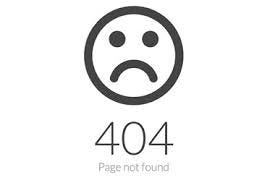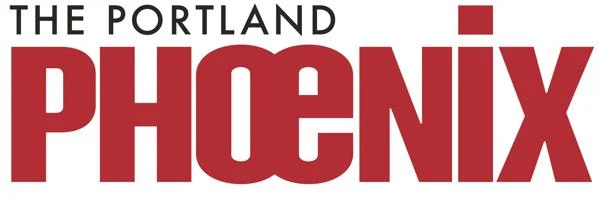The Boulevard of Broken Links
There are holes in our digital baskets, and things are falling through
Our digital lives in the modern era are largely fleeting moments, and apparently have expiration dates that none of us ever considered.
Lately, in cultural conversation, we have been focused more on the content (rather than the mechanics) of our digital lives from 5, 10, or 15 years ago. 5 years ago, none of us had experienced an international pandemic. 10 years ago, there wasn’t a #metoo movement. 15 years ago, Barack Obama was still in office.
Thankfully, or much to our collective chagrin, we have Facebook Memories. That incessant, insouciant mining of what is arguably our previous lives for modern day clicks.
It was 15 years ago that I posted some sort of brief commentary on the Walmartization of the United States grocery industry. These days, we take it for granted that one can do nearly all of their essential shopping at Walmart or Target. Hard to remember that wasn’t always the case. My Facebook post referenced an article I had read in an actual analog, glossy paper copy of Gourmet Magazine, many years before then, about how Walmart brutally beats up its independent vendors to undersell groceries. This was poignantly illustrated by comments from an organic dairy farmer with a Walmart contract that was simultaneously saving and enslaving him, his family, and their business.
This is all very important and as relevant today as it was 15 years ago, and the several years prior when the article was originally published.
But, this isn’t about groceries, or Walmart.
I’d love to share the link with you of this story. Regrettably, it’s not there anymore. A desire to read this article again was met with a fairly unforgiving and unhelpful 404.
When relaying the story to my lady love, she responded, reassuringly, “Well, you can always find it on the Internet Archive… You know, the Wayback Machine.“ Of course, she is correct, and I did remember this, but it really is not the same thing. It’s the difference between personally visiting a street address, or seeing it on a map. Witnessing the physical object, or viewing a photograph of it. It’s work that has been taken out of its original context and residence, and filed away flat for storage. It doesn’t live at the same place that it used to, so we can’t really go there anymore.
We have a term for this now, “digital decay.” Of course we came up with a term for this. It’s one of the things we are best at.
Journalist Christianna Silva, at Mashable, states a case for why this may be so much greater of a concern than we are currently admitting. Please read their article, as it talks this down very efficiently.
The punchline of the article is that the axiom “watch what you put on the Internet, because it last forever,” may actually be full of crap.
Our concern should more appropriately be, “watch what you put on the Internet, because it may not be there in five years.”
In my humanities seminar this past school year at University of Hartford, I suggested to my fellow students that in our evolution of language and communication, spoken and typed, intentionally humanly created and AI-generated, we are slowly skimming parts of our communication away. It may seem that we are simply making our communications more efficient and direct, but are not considering the amount of confusion created in the wake.
And it is in the margin, between our capacities for understanding, and the somewhat underperforming nature of our communication in present day, that a growing layer of confusion emerges. I truly believe that it is in this margin that artifice is allowed to live and thrive. It is where our present fascination with AI comes from; our inability, or disinterest, to communicate in actual human ways.
We can't even be bothered to file away our own stuff in a manner that will allow us to access it in the future. We are discarding our digital lives as quickly as we are making them. Outmoding has become such a part of our lives, through cheap construction or planned obsolescence, that we are just rolling with this.
I encounter this issue in other ways, as well. In my professional life, when I am constantly being asked to recapitulate work from eras past that likely doesn't live where it once belonged. I spent so many years as a columnist and freelance writer for the Portland phoenix newspaper, an extension of the legendary Boston Phoenix. Since those days, the Boston Phoenix was shuttered, the Portland Phoenix spun off, the new Phoenix entity sold to new owners, the Phoenix ran like a dead man walking for many years, and finally evaporated into the ether a few years ago. Probably over quarantine times. All of my work that I did for that hallowed institution should, for all intents and purposes, be dead. Dozens upon dozens of dead links to stories and photos about bands, venues, and markets that no longer exist. The archive eventually landed in the digital vault at the Portland Public Library, so all of those times, all that work is not entirely lost. But, it sure feels like it.
“More fundamentally, it leaves articles from decades past as shells of their former selves, cut off from their original sourcing and context.”
This little tidbit from the Columbia Journal Review feels especially poignant for Generation X. Not to make sweeping generalizations or anything, but thanks to our lifelong attachment and connection to technologies, we all largely feel like husks of what we once were and what we once represented. Just like these forgotten links. Our modes and means have changed umpteen times, and we learned every single one of them, if a little reluctantly.
I guess this is the moment that we can all celebrate the fact that Generation X is both search – savvy, and stubborn as all hell. Thus, when presented with a broken link, we just do what we always do, and find a way around it to get to what we want.
POSTSCRIPT: This piece was originally intended to be published earlier this week. However, my desire to include a link to the original Gourmet article in question proved to be a multi-day operatic arc, thusly proving the thesis above. It’s embedded in the article, and can also be found here. http://www.gourmet.com.s3-website-us-east-1.amazonaws.com/magazine/2000s/2005/06/walmart18ff.html?currentPage=1






